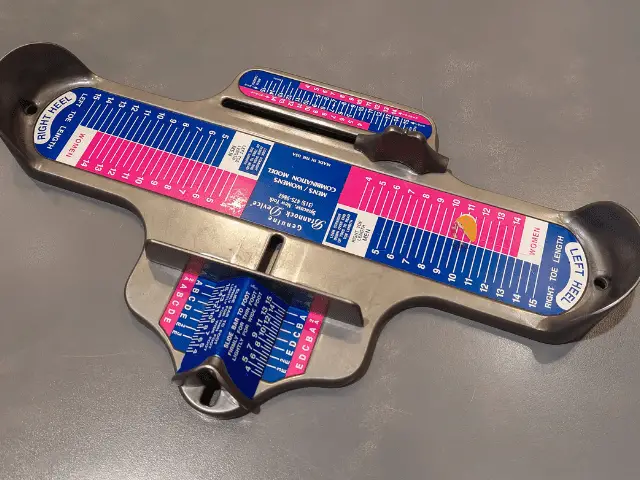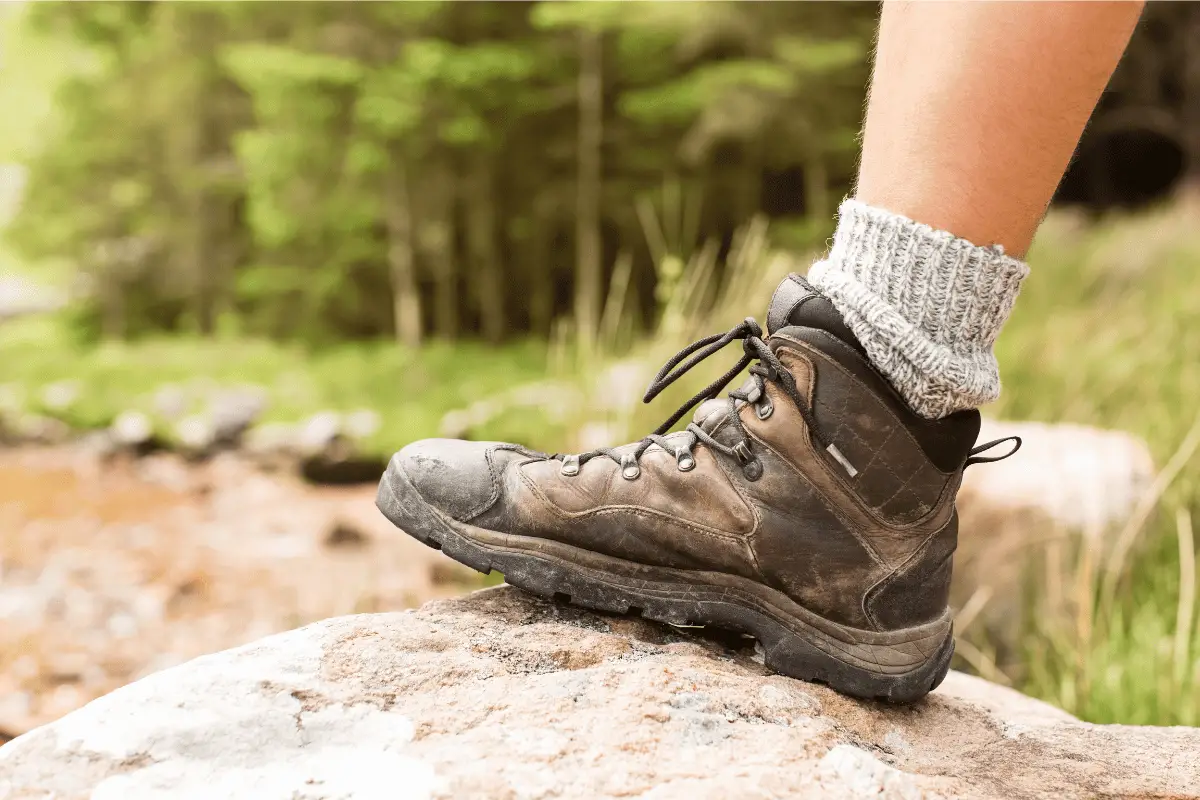Happy feet are the key to happy hiking. Hiking boots can keep your feet supported and comfy while trekking through rough trails or carrying an expedition-weight load. This begs the question: should I buy hiking boots too big or too small?
Let’s face it, hiking boots aren’t cheap, so having one that fits perfectly is a win! Most of the time, if your shoes are too small, your toes will rub against your shoe’s top, causing blisters or sores. On the other hand, you can tell it’s too big if 2 or 3 fingers can easily slide in.
So, you ask, which is better for your feet – boots a little too big or too small? And how should hiking boots fit?
In this article, we’ll answer those questions and tell you exactly how those hefty boots should fit. Read on!
Is It Better to Buy Boots a Bit Tight or a Bit Loose?
In a perfect world, hiking boots shouldn’t be too tight or too loose for your feet. The ideal fit should be snug with plenty of space to move your toes and a max of a quarter to a ½ inch of slippage at the heel.
However, sometimes we may feel like we’re right in between sizes and not sure whether to go a size up or down. It’s an important decision because hiking boots fit can mean the difference between a fun and rewarding hike and a discomforting and miserable one.
So, in this guide, we’ll look at how hiking boots should fit and run down the hiking boot fitting process and ultimately whether it’s better to go up or down a size if necessary.
Know How to Size Your Hiking Boots

Finding the best-fitting boots means learning how to size them. For this, a foot measuring tool will be your best friend. This can easily be done at home, though you can do it at a store with the guidance of an experienced outdoor gear specialist.
will be your best friend. This can easily be done at home, though you can do it at a store with the guidance of an experienced outdoor gear specialist.
Remember to check for each foot’s length, width, and arch.
Additionally, a foot volume measurement is also useful in determining the best boot size. Although, it can only be measured by store personnel as they have the equipment to do it.
measurement is also useful in determining the best boot size. Although, it can only be measured by store personnel as they have the equipment to do it.
In case you aren’t able to get your foot measurements, the most common piece of advice is to buy hiking boots a half size bigger than your usual shoes.
This is a good idea for many reasons, including the fact that you can wear thicker hiking socks and avoid the possibility of feet swelling while hiking.
Once these are all done, you can finally shop for your new hiking boots and try them on!
Trying On and Breaking In
Obviously, no two feet are the same. That’s why recommending the best hiking boots brand is a little tricky. Each brand’s shape and size vary, so it’s a good idea to go to a store and try the boots on to see how they feel on your feet.
Pro Tip: If you feel you’re in between sizes with one particular brand – try another brand to see if you can achieve a more ideal fit!
You’ll notice right away if the boots are comfy or if they cause you pain, usually in the ankle or toe area. Boots that are too tight may require some breaking in, but you don’t want to spend too much time doing so.
So, the ideal way to break in your hiking boots is to wear them as if you’re on the hiking trail. This means wearing the actual socks and insoles (orthotics) as to how you intend to wear them during the hike. These factors significantly affect your hiking experience.
It’s also a good idea to load up your backpack and wear it while trying on your boots. This way, you can get a good sense of the boot’s responsiveness with your actual weight while wearing your gear.
Finally, try to imitate your hiking. Walk on different surfaces and edges, both uphill and downhill. Staircases are also good alternatives. Make sharp cuts and turns. That’ll help you get a good feel of the new boots.
Lace Up Your Hiking Boots

Hiking boots should not be too tight, but they shouldn’t be too loose to allow your foot to move inside freely. Take extra care not to let your heel slide up and down as you walk; this is a recipe for disaster. In short, blisters.
Next, lace those boots tightly, but don’t overdo it. Just tie them till you feel your feet are secured enough.
If the boot’s cuff feels tight on your calf, you may need to look at boots with a lower cut-off at the back.
Next, while laced, test the boot’s volume around your toes. If you can feel pressure anywhere, then you need a wider size. Whereas, if you can pinch many materials of the boot without feeling your leg underneath, you need a smaller or narrower boot.
Pro tip: if you have narrow heels, you need a boot with extra cushioning, or try heel lock lacing to hold the heel in place.
Check the Boot Space and Forefoot Volume
We suggest you allow at least a thumb’s width between the tip of your toe and the front of the boot. This is useful on uphill or downhill trails. And this toe allowance keeps your foot from rubbing against the front of your boot, preventing injury.
Additionally, the forefoot needs to be spacious enough to fit your foot with socks on comfortably. Remember to use the same socks you used when trying on the boots for hiking.
Will Boots Stretch Out or Get Tighter Over Time?
In most cases, hiking boots may stretch slightly over time. However, it’s more of them forming to your feet after breaking in rather than becoming too loose.
Overall, Synthetic Leather will stretch a bit over time but probably not more than a 1/2 size.
So… Too Big or Too Small?
I’ve tried to give you as much info as possible to help you achieve a great fit for your hiking boots because, ideally, you really don’t want your boots to be too big or too small. Having improper fitting boots can lead to blisters and other foot issues.
If you have to buy a bit small, you can take solace in knowing that your boots should break in and give you a bit more room over time. In the meantime, you could experiment with thinner hiking socks to make up the difference in space.
If you have to buy a bit big, I would suggest trying to go with a thick hiking sock to try to fill a bit more room in the shoe.
If you forced me to choose one or the other, I would probably go with a little too small versus too big.
Summary
Follow these tips to try to get the best fit possible:
Try standing in the boots without lacing them to get the ideal fit. They should feel snug in the heel and midfoot with wiggle room for your toes. They shouldn’t feel too tight or loose.
Subsequently, try walking on a steep hill. Again, the boots are too small if your toes bang or rub on the front of the boot. While if you slide forward, they’re too big.
Ultimately, the goal is to ensure that your heel stays in its desired location within the boots as you walk.
We hope this hiking boots fitting guide helped you find the perfect pair.
Happy hiking!

